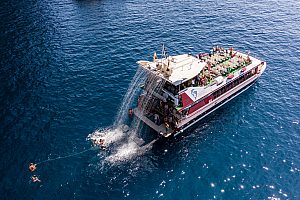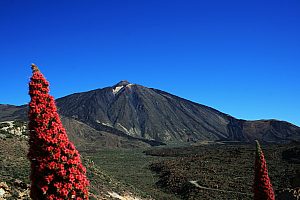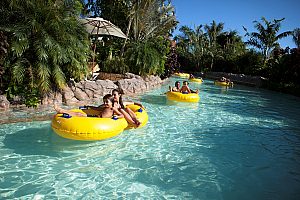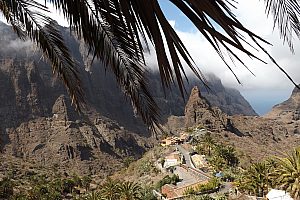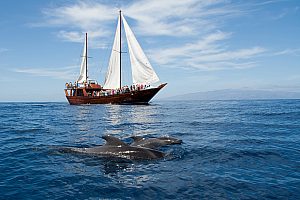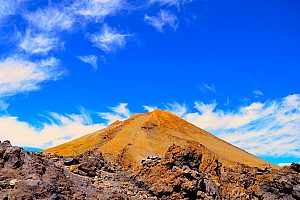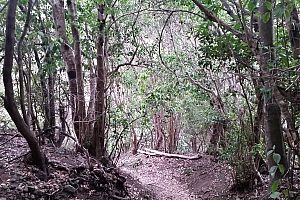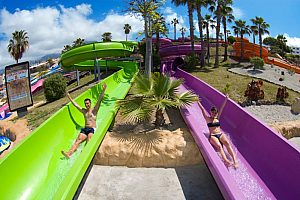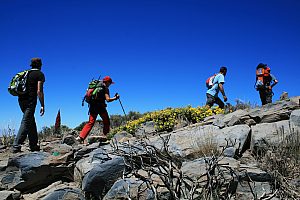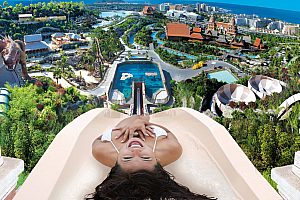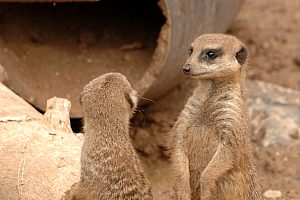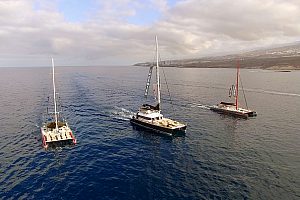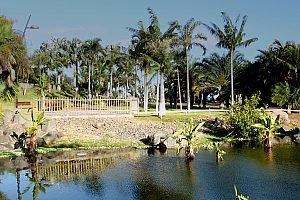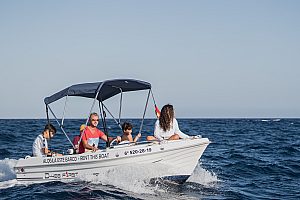Bienvenido in Tenerife!
Discover the island beauty of the Canary Islands
The original - travel guide for Tenerife with highlights, top 10 lists, places of interest, excursion tips and lots of real insider tips - as you have never experienced Tenerife before. Including practical tips from A-Z.
For a perfect and individual holiday in Tenerife there are definitely some hints. We give you everything you need for an unforgettable holiday on the Canary Island.

Tenerife is not only the largest of the seven Canary Islands, it is also the most populous island in Spain and one of the most popular tourist destinations in Europe. Five senses are hardly enough to discover the breathtaking diversity of the Canary Islands' beauty, whose nature and culture could hardly be more diverse!
Country
Tenerife ist the largest of the Canary Islands and is part of Spain and therefore part of the European Union
Geographical position
The island is surrounded by the Atlantic Ocean and is west of Africa
Area
2.034 km²
Residents
888.000 (from 2015)
Popular destination: Tenerife
Tenerife is one of the most popular tourist destinations in Europe. Every year, up to five million people are attracted to the largest of the seven Canary Islands, located in the Atlantic Ocean 288 kilometres from the coast of Morocco and 1,274 kilometres from the southern coast of Spain. Topographically it belongs to Africa like all Canary Islands, but with about 880,000 inhabitants it is the most populous island in Spain. One of the largest cities on the island is the capital Santa Cruz de Tenerife with 225,000 inhabitants. It is also the provincial capital of the islands of Tenerife, La Palma, La Gomera and El Hierro.
In the language of the indigenous population of Guanche, Tenerife means "snow-covered mountain", among Spaniards the island is also called "the island born of fire". This can be traced back to the volcanic origin of the island about twelve million years ago. The island's impressive geological history can still be admired in the Anaga mountains in the extreme north-east, the Teno mountains in the north-west and in many parts of the extreme south. Here, Tenerife plays with the contrasts of enchanted, misty laurel forests, impressive volcanic mountain ranges and remote headlands and beaches that give the impression of a desert island.
Capital
Santa Cruz de Tenerife
Language
Local language is Spainanisch
Currency
Euro
Time zone
WEZ (UTC±0) – one hour behinder british time
Teneriffa – the island of contrasts
While big city life rages in the capital Santa Cruz de Tenerife, the old town of La Laguna, which is a UNESCO World Heritage Site, impresses with its still preserved colonial architecture. To the north in the Teno Mountains and further east in the Anaga Mountains, wild green heights give the impression of a deserted island. In contrast, the south at the foot of the Pico del Teide is characterised by barren lunar landscapes and bizarre rock formations. Classically beautiful white sandy beaches can also be found here, while a few kilometres further on there are beaches with a rocky and gorgeous backdrop and pitch black beaches. The unique natural landscape of Tenerife is more varied than any other island - and therefore a unique destination for every type of holiday.

Entry requirements
only with valdi ID Card
Socket
No adapter is needed for the euro sockets
Internet
There are no additionl costs as a result of the EU Agreement about Roaming.
All about Tenerife
No wonder that up to five million tourists are attracted to the island beauty of the Canary Islands every year. In order to make your holiday in Tenerife an unforgettable experience, you will find here all the information you need about the main attractions and most popular destinations in Tenerife. Whether you are looking for a carefree, relaxing holiday on Tenerife on the beach or an active holiday on the island's cycle and hiking trails, with our practical tips and recommendations you are well prepared for the many excursions and activities on the Canary Islands. Look forward to your holiday on the island beauty of the Canary Islands!
Tenerife highlights at a glance
Tenerife is the island of contrasts, with a breathtaking variety of nature from the coast in the north to the mountainous centre of the island and the southernmost tip. But not only nature lovers get their money's worth on hiking and cycling tours through the varied natural landscape of Tenerife, along the most beautiful beaches of the island to the most popular destinations on the Canary Island! In the popular holiday resorts on Tenerife you can also immerse yourself in the culture of the Canary Island in the many museums and exhibitions, on walks through the old towns or at traditional festivals. Tenerife has something to offer for every type of holiday - even the odd insider tip!
Why Tenerife is worth a visit
Three factors are among the outstanding arguments in favour of a holiday in Tenerife: the unique, year-round mild climate, the trade winds that bring the island, the extremely varied and contrasting natural landscape and the charming islanders with their Canary Island traditions and customs. Numerous excursions and activities invite you to explore every corner of the island.
Climate
The most important reason for many tourists to spend their holidays in Tenerife is the unique climate of the island. Due to the trade winds, which blow with 20 to 25km/h over the north-east of the island, Tenerife attracts with an average annual temperature of 23°C. In summer the temperature rarely climbs above 30°C, while in winter it is at least 17°C. Consequently, Tenerife is also called the "Island of Eternal Spring" - and is therefore worth a visit all year round.
Flora and Fauna
On the largest and highest island of the Canary Islands, tourists are presented with a special ecological diversity. In a stretch of just a few hundred metres you can admire the vegetation of Tenerife, which is constantly changing in radical ways. The different altitudes, trade winds and microclimates have created six very different ecosystems in Tenerife:
- Succulent scrublands: Along the coast up to 700 metres above sea level, succulents grow, adapted to drought, strong winds and the many hours of sunshine per year. Although the Canary Islands account for only 1.5% of Spain's surface area, they are home to half of all endemic species
- Thermophilous forests: Sabinas, dragon trees and palm trees grow in so-called thermophilic forests, which are located 200 to 600 metres above sea level. Moderate rainfall and temperatures favour their growth
- Pine forests: A typical mediterranean aspect are pines, which also grow on Tenerife and at 800 to 2000 metres above sea level
- Laurel forests: A unique floral feature of Tenerife is the dense laurel forests, where not only laurel trees grow, but also ferns, Canary Island holly and Indian perseas. Legend has it that witches lived in the dense cloud forests.
- Bush forests: As the laurel forests were extensively cleared, the tree-heath scrub forests today make up the entire forest area of the island. The Micronesian bagel tree and the tree heath defy the trade wind clouds and grow 10 to 20 metres high
- High mountains: Above 2000 metres there are extremely dry, hot temperatures. This is where the Wildprets Natternkopf grows - the purple-red flowering pride of Tenerife, which can reach a height of 2.5 metres
During a walking or cycling tour through Tenerife, you will literally experience an up and down ride through typical Mediterranean areas, exotic deserts as well as dry areas and mountainous regions. You could encounter over 200 species of birds, rare frogs, butterflies and numerous species of reptiles such as geckos and lizards. The southwest coast is also a popular place to watch fin whales, dolphins, orcas and even blue whales during your Tenerife holiday!
Country and people
There is no doubt that Tenerife owes its special charm also to its compatriots, their special, cheerful nature, their Canarian accent and their traditions and customs - all of which are known beyond the borders of the country. It has a surface area of approximately 2,034 square kilometres, with a population of 888,000, spread over the 31 municipalities of Tenerife. San Cristobal de La Laguna and the island capital Santa Cruz de Tenerife are the largest cities in the archipelago. It is here and in the towns of Arona and Adeje, located in the tourist south of the island, that most of the "Tinerfeños", as the islanders call themselves, live.
Even though tourism has left its mark on the island, the inhabitants of the island have preserved their centuries-old history, so that a holiday in Tenerife makes it possible for tourists to experience Canarian traditions and customs. In particular, the indigenous people of the island, the "Guanches", were able to regain their very own Canarian culture after the period of oppression under the Spanish dictator Franco. Important cultural events - but also tourist highlights - are the Festival de Música de Canarias and the carnival in Santa Cruz. In Canarian folklore, the colourful and splendid costumes, the timple, a typical Canarian ukulele-like instrument, is played at popular festivals and romerías. It is sung and danced to. Whether you are a nature lover looking for peace and quiet in the countryside, a sun worshipper relaxing on the beach or the exciting nightlife in the capital, Tenerife has the right experience package for every type of holiday!
Click here to see the most important sights of Tenerife
Bestsellers Tenerife
Maybe you are interested in the following activities and tours:

